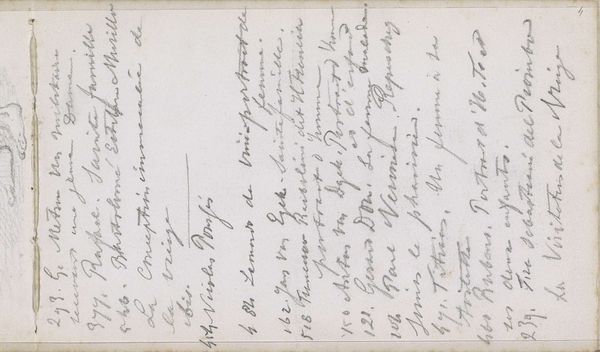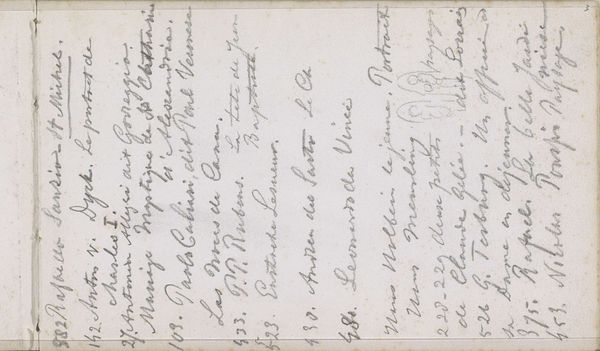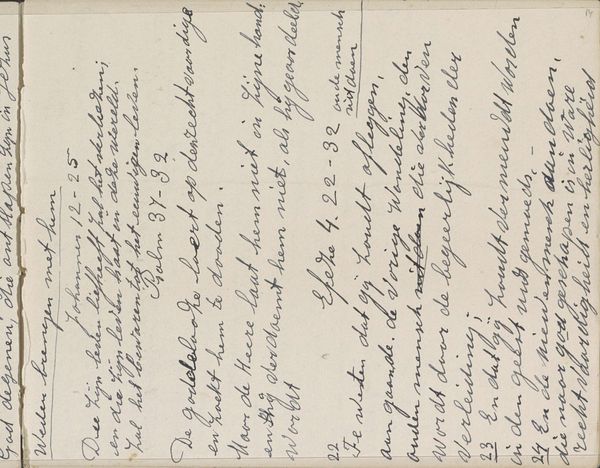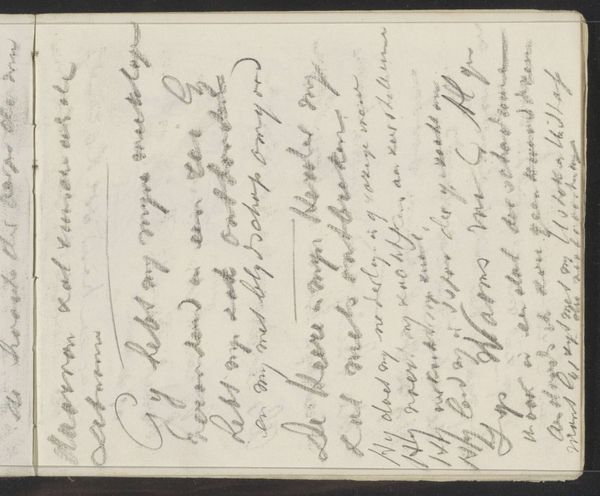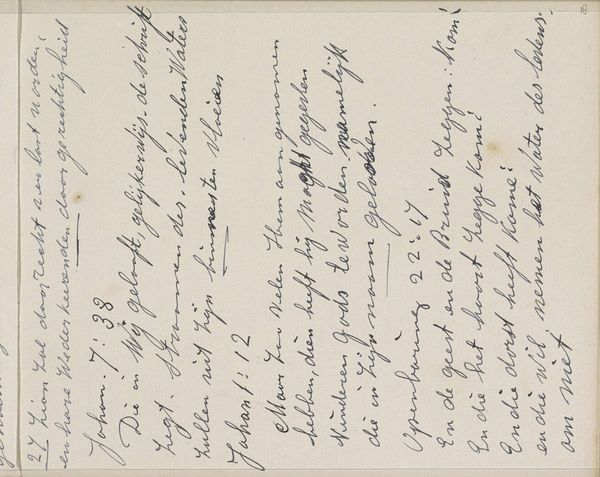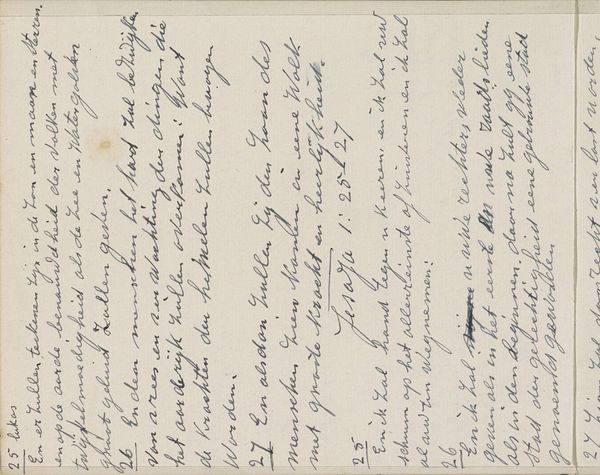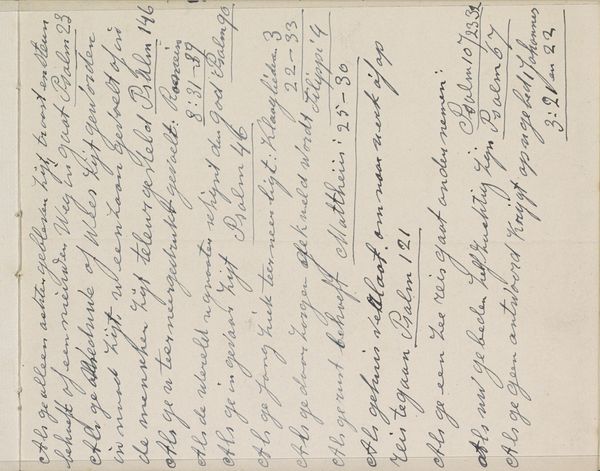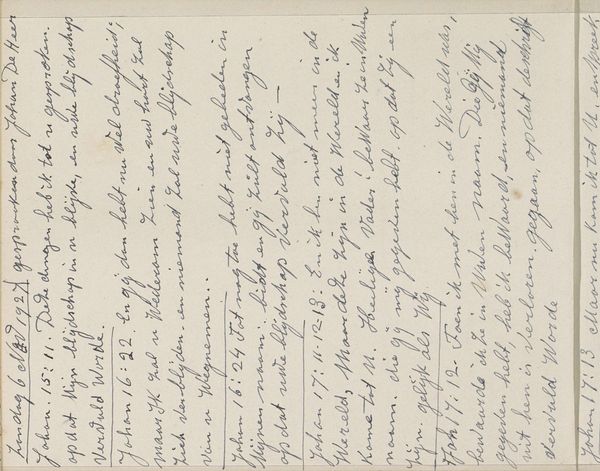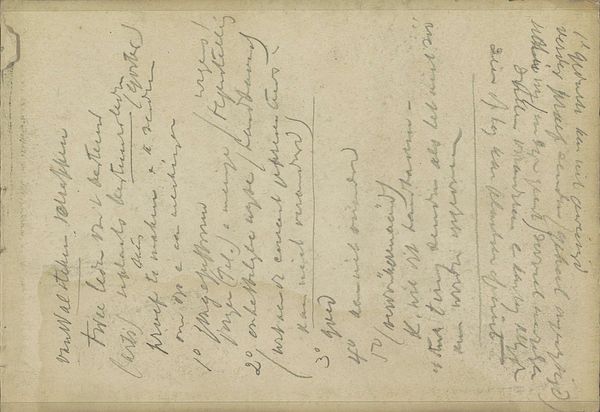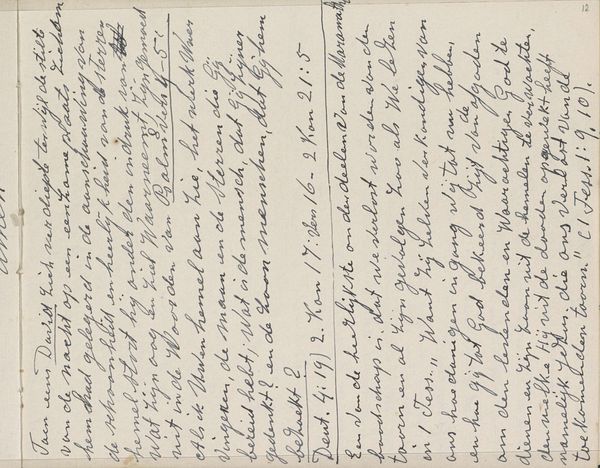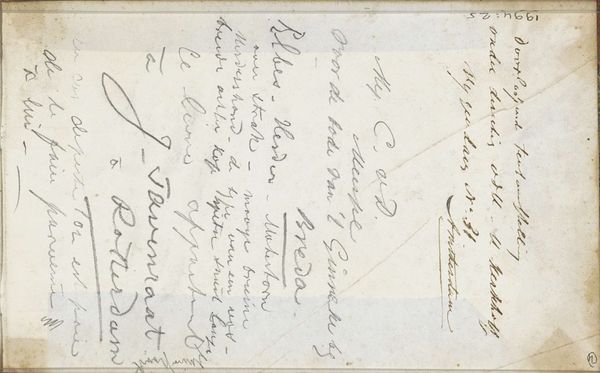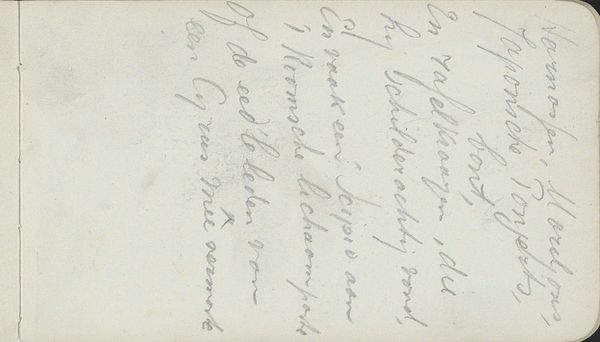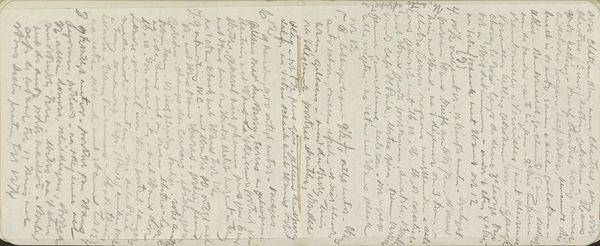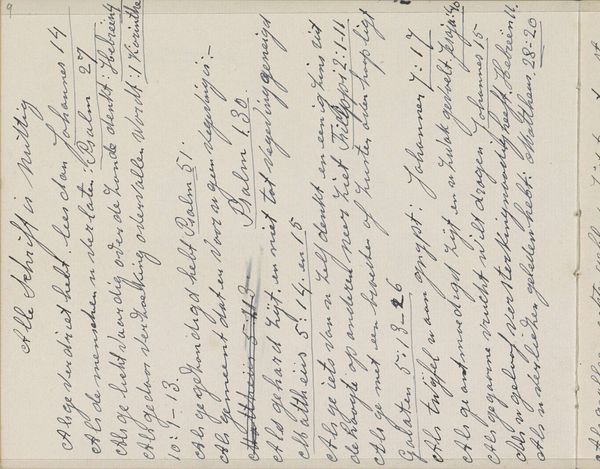
drawing, paper, ink, pencil, graphite, pen
#
drawing
#
hand written
#
hand-lettering
#
incomplete sketchy
#
hand drawn type
#
hand lettering
#
paper
#
ink
#
hand-written
#
hand-drawn typeface
#
fading type
#
pencil
#
calligraphic
#
graphite
#
pen
#
calligraphy
#
small lettering
Copyright: Rijks Museum: Open Domain
Editor: So, this is "Lijst met kunstenaarsnamen" - "List of Artist Names" - a drawing from 1867 by Maria Vos, using pen, ink, graphite, and pencil on paper. It almost looks like a hastily scribbled list or note. How do you see it? Curator: I see the materials as intrinsic to the meaning here. It's not just what’s written, but *how* it's written that matters. The mix of graphite, ink, pencil suggests a process of layering and correction, almost a tangible record of the artist’s thought process and access to different writing tools at the time of its creation. Editor: A tangible record, I like that! Curator: Exactly! Consider the cost and availability of different drawing implements at the time. Was it common for an artist, let alone a female artist, to access these materials so easily? What sort of societal infrastructure would facilitate this type of artistic process, particularly for someone like Maria Vos? The labor implied here – the time, effort, and materials consumed in compiling this list – pushes back against the traditional hierarchies separating drawing from more "finished" art forms. Editor: So it's almost elevating the preliminary sketch to a finished product, focusing on the work of the piece in itself, but how does gender tie in to the work/effort behind it? Curator: In the 19th century, female artists often had limited access to formal training and resources. The availability and skillful use of drawing materials and tools highlights Maria Vos' tenacity and skillful technique against the restrictive practices within the art industry, and perhaps challenges the conventions of the period around who got to make art, and what kind of art was "valued". Editor: That's fascinating. I never thought about it in terms of access and labor, but it totally reframes how I see this seemingly simple piece. Curator: Indeed! Focusing on the materiality and means of production draws out layers of social context and artistic struggle often overlooked in traditional art historical analysis.
Comments
No comments
Be the first to comment and join the conversation on the ultimate creative platform.
